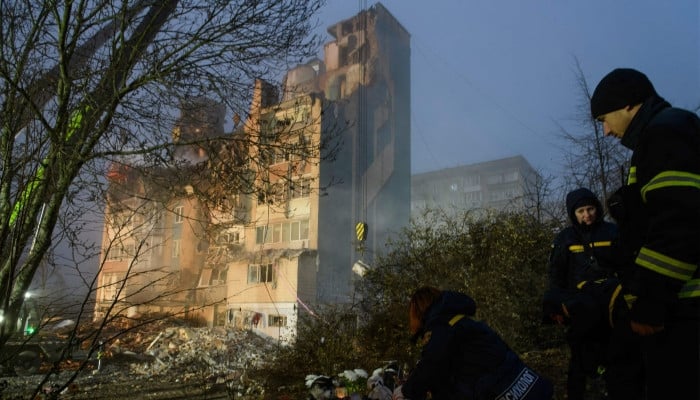
Prime Minister Shehbaz Sharif addresses ceremony in Azad Jammu and Kashmir on November 20, 2025. — X/@GovtofPakistan
#report #validates #Pakistan #military #edge #India
Prime Minister Shahbaz Sharif on Thursday said that a recent US report confirming the downing of Indian jets by Pakistan stands as an official endorsement of the country’s military might.
He made these remarks while addressing a foundation laying ceremony for a Danish school in Azad, Azad Jammu and Kashmir (AJK).
Prime Minister Shehbaz said the latest report to the US Congress “sealed” Pakistan’s position on the events of the May conflict, claiming that “India has been slapped with a sting by Pakistan’s armed forces”.
“Allah Almighty has honored Pakistan through the bravery of our soldiers,” he added.
A report submitted to the United States Congress acknowledged Pakistan’s “military victory over India” in the four-day war in May this year, saying Pakistan used Chinese-made weapons to shoot down Indian fighter jets, including the French-made Rafales.
The prime minister claimed that the Pakistan Air Force (PAF) and army had “brought India to its knees within four days”, and argued that Trump’s repeated praise of Pakistan in his public speeches was further recognition of its battlefield performance.
He said, “Trump praises Pakistan in every speech.
Turning to education, Prime Minister Shehbaz said Danish schools are transforming opportunities for children across the country.
Students of these institutes get free education, accommodation, uniform and assistance on merit, he said, adding that the network launched in Punjab is now expanding across the country. He announced that Bagh Campus will be inaugurated on March 23, 2026.
Prime Minister Shehbaz also indicated that a Danish school would be approved for forwarding, saying that the dream of expanding such institutions in AJK was now close to being fulfilled.
The Pakistan-India conflict was sparked after India launched strikes inside Pakistan following a deadly attack that killed 26 people in the Indian-held town of Pahalgam in Jammu and Kashmir.
A report by the US-China Economic and Security Review Commission—which reviews US-China security and foreign affairs—highlighted the deepening defense cooperation between Islamabad and Beijing, saying Pakistan has used advanced Chinese weapons to increase its military superiority over India.
This conflict marked the first time Pakistan saw China’s advanced weapon systems successfully employed in active combat, including the HQ-9 air defense system, PL-15 air-to-air missiles, and J-10C fighter jets.
The clash – during which Islamabad says the PAF downed seven Indian fighter jets, including a Raffles – has become a notable “selling point” for China’s defense sales efforts.
He also noted that China offered to sell 40 J-35 fifth-generation fighter jets, KJ-500 surveillance aircraft, and ballistic missile defense systems to Pakistan in June.
The report also emphasized the intensity of the conflict, observing that the two countries have hit targets deeper into each other’s territories “at no point in the last 50 years”.
The deadly standoff between the two countries began when India launched a missile strike inside Pakistan during the night of May 5 and 6, which New Delhi claimed was aimed at “terrorist targets” in response to the Pahalgam attack.
However, the strikes resulted in the martyrdom of several civilians and security personnel, while Pakistan, in addition to downing Rafales and other fighter jets, downed dozens of drones.
The Pakistan Armed Forces then launched a large-scale retaliatory operation, named “Operation Bunyan-um-Marsos”, targeting more than 20 Indian military positions in various regions.
The Pakistan Air Force also used its JF-17 Thunder jets to destroy India’s S-400 air defense system at Udaipur using hypersonic missiles.
Clashes between the two nuclear-armed nations ended on May 10 after a cease-fire agreement brokered by the United States.




